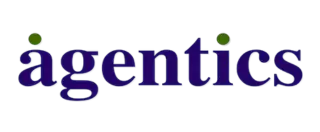
What is a RAG Model? Understanding Its Role in AI and Sales
GeneralOverview
The Retrieval-Augmented Generation (RAG) model serves as a pivotal advancement in AI capabilities within the sales domain, seamlessly integrating external knowledge bases with large language models. This integration empowers businesses to deliver precise and contextually relevant responses.
By illustrating the transformative impact of RAG, we see how it enhances client interactions and decision-making through real-time data access. The result is a significant boost in efficiency and customer satisfaction across commercial environments.
Embracing the RAG model is not just a strategic move; it is essential for staying competitive in today’s fast-paced market.
Introduction
Retrieval-Augmented Generation (RAG) is transforming the landscape of artificial intelligence by effectively bridging the gap between traditional generative models and real-time data retrieval. This innovative approach not only enhances the accuracy of responses but also empowers businesses, particularly in sales, to make informed decisions based on the most current information available.
However, as organisations increasingly adopt RAG technologies, they encounter significant challenges, such as ensuring data quality and managing computational costs.
How can companies fully leverage the potential of RAG while mitigating these risks?
Define Retrieval-Augmented Generation (RAG) Model
Retrieval-Augmented Generation (RAG) exemplifies what is a rag model, representing a significant advancement in AI architecture that enhances the capabilities of large language models (LLMs) through integration with external knowledge bases. This innovative model empowers AI systems to retrieve pertinent information from these databases prior to generating responses, thereby elevating the accuracy and relevance of the output.
What is a rag model distinguishes itself from traditional generative models that rely solely on pre-existing training materials by seamlessly merging retrieval and generation processes, enabling the delivery of contextually appropriate responses to user inquiries. Such a method proves especially beneficial in environments where current and precise information is critical, such as sales and client service sectors.
Recent advancements in RAG technology have showcased what is a rag model and its remarkable ability to enhance LLM performance significantly. For example, RAG deployments yield outputs that are not only more accurate but also exhibit greater coherence and relevance, leveraging extensive amounts of up-to-date information. This capability is vital in high-stakes settings where precision is non-negotiable.
Real-world applications of RAG include support chatbots that utilise organisational knowledge bases to deliver precise responses grounded in specific policies and client information, thereby bolstering satisfaction and operational efficiency. By granting LLMs access to information beyond their training resources, RAG systems are revolutionising how businesses engage with their customers and refine their internal processes.
Contextualize RAG in AI and Sales
In the realm of artificial intelligence, understanding what is a rag model represents a pivotal advancement in the interaction between AI models and information. Traditional AI models often struggle to deliver precise and timely information, particularly in dynamic environments like commerce.
What is a rag model that effectively addresses this gap? By enabling sales teams to access real-time information and insights, understanding what is a rag model becomes essential for informed decision-making. For instance, when a representative queries a RAG-enabled system about a product’s specifications, the model retrieves the most current data from a database, ensuring that the response is both accurate and relevant to prevailing market conditions.
This capability enhances the efficiency of commercial operations and empowers teams to manage client inquiries with greater effectiveness and confidence. Current trends indicate that teams leveraging what is a rag model for real-time data access are witnessing significant improvements in responsiveness and customer satisfaction, highlighting the importance of integrating such advanced AI technologies into their strategies.
Recent statistics reveal that 76% of users have experienced higher win rates due to AI-powered tools, highlighting RAG’s role in boosting performance. As Michael aptly noted, “We’re turning tribal knowledge into a scalable playbook,” illustrating how RAG can revolutionise sales processes by providing timely insights that enhance decision-making.
Explore Key Features and Components of RAG
The Retrieval-Augmented Generation (RAG) model demonstrates what is a rag model by integrating two fundamental components: the retrieval mechanism and the generation mechanism. The retrieval mechanism adeptly queries external knowledge bases to pinpoint relevant information based on user input. Utilising sophisticated algorithms, such as BM25, this process ranks and selects the most pertinent information, guaranteeing that the retrieved details are both accurate and contextually appropriate. Following the aggregation of relevant information, the generation mechanism synthesises this knowledge with the user’s query, yielding a coherent and contextually appropriate response.
To understand what is a rag model, one must recognise that RAG models are meticulously designed to integrate with a variety of data sources, including both structured databases and unstructured documents, making them adaptable across multiple industries. This dual-component architecture significantly enhances the precision of responses and exemplifies what is a rag model, allowing flexibility in application, ranging from client support to sales enablement. For instance, e-commerce businesses leverage RAG to personalise client interactions by dynamically accessing product databases, thereby enhancing engagement and satisfaction. Likewise, healthcare organisations utilise RAG to bolster diagnostic accuracy through real-time access to medical literature, demonstrating what is a rag model’s versatility and effectiveness in tackling complex challenges.
The global retrieval augmented generation market was valued at USD 1.2 billion in 2024 and is projected to reach USD 1.5 billion in 2025, underscoring the escalating significance of RAG technologies. As Reid Hoffman, co-founder of LinkedIn, aptly noted, “AI is going to reshape every industry and every job,” highlighting the transformative potential of RAG models across diverse sectors. However, organisations aiming to implement RAG solutions must navigate challenges such as high computational costs and privacy concerns, which are crucial considerations for successful adoption.
Illustrate Benefits and Applications of RAG in Sales
In commercial settings, applying Retrieval-Augmented Generation (RAG) presents substantial advantages, prompting the question of what is a rag model that should not be overlooked. The precision in client interactions is markedly improved, personalization is enhanced, and efficiency in lead generation is significantly heightened.
Consider a marketing group that employs a RAG-enabled chatbot; it can deliver tailored product suggestions based on real-time inventory and specific client preferences. This approach not only elevates client satisfaction but also boosts conversion rates.
Furthermore, RAG optimises the revenue process by automating routine inquiries, allowing representatives to concentrate on more complex tasks that necessitate human expertise. Organisations embracing RAG technology, or what is a rag model, can anticipate a remarkable improvement in performance, as the model equips teams with timely, relevant information that enhances decision-making and fosters deeper customer engagement.
Additionally, RAG’s ability to produce highly specific outputs without extensive fine-tuning or training augments its efficiency within commercial environments. With a projected market growth rate of 49.1% from 2025 to 2030, the transformative potential of RAG in reshaping sales strategies is becoming increasingly evident.
However, it is crucial for companies to remain vigilant regarding potential challenges, such as data quality issues and biases in the underlying data, which could undermine the effectiveness of RAG implementations.
Conclusion
Retrieval-Augmented Generation (RAG) models signify a transformative leap in artificial intelligence, seamlessly integrating information retrieval with generative capabilities to deliver responses that are both accurate and contextually relevant. This powerful combination not only enhances the performance of large language models but also effectively addresses critical shortcomings in traditional AI systems, particularly within fast-paced sectors such as sales and customer service.
This article delves into the multifaceted advantages of RAG, underscoring its capacity to access real-time data, bolster decision-making, and enrich customer interactions. Noteworthy insights include the model’s dual-component architecture, which fuses retrieval and generation to provide precise information, alongside its increasing relevance across various industries, as evidenced by significant market growth projections. Real-world applications illustrate how RAG can streamline sales processes, elevate customer satisfaction, and drive operational efficiency, establishing it as an essential asset for contemporary businesses.
Adopting RAG technology transcends the mere integration of a new tool; it represents a fundamental shift in how organisations interact with customers and utilise information. As the AI landscape continues to evolve, incorporating RAG models into sales strategies will be imperative for companies striving to maintain a competitive edge. By leveraging the capabilities of RAG, businesses can enhance their operational efficiency and foster deeper connexions with their clients, paving the way for sustained success in the marketplace.
Frequently Asked Questions
What is the Retrieval-Augmented Generation (RAG) model?
The Retrieval-Augmented Generation (RAG) model is an advanced AI architecture that enhances the capabilities of large language models (LLMs) by integrating them with external knowledge bases, allowing AI systems to retrieve relevant information before generating responses.
How does the RAG model differ from traditional generative models?
Unlike traditional generative models that rely solely on pre-existing training materials, the RAG model merges retrieval and generation processes, enabling it to provide contextually appropriate responses to user inquiries.
In what environments is the RAG model particularly beneficial?
The RAG model is especially beneficial in environments where current and precise information is critical, such as sales and client service sectors.
What improvements does the RAG model bring to LLM performance?
Recent advancements in RAG technology have shown that it significantly enhances LLM performance by yielding outputs that are more accurate, coherent, and relevant, leveraging extensive amounts of up-to-date information.
What are some real-world applications of the RAG model?
Real-world applications of the RAG model include support chatbots that utilise organisational knowledge bases to deliver precise responses based on specific policies and client information, improving customer satisfaction and operational efficiency.
How does the RAG model revolutionise business engagement?
By granting LLMs access to information beyond their training resources, RAG systems are transforming how businesses engage with customers and refine their internal processes.
Enjoyed this post? Share it with your network!
10 Best AI Sales Tools to Boost Your Team’s Performance

Discover the top 10 best AI sales tools to enhance team performance and drive revenue growth.
Mastering Test Call Numbers: A Step-by-Step Guide for Sales Directors

Elevate your communication with our guide on mastering test call numbers for sales success.
7 Ways Automated Outbound Calls Boost Sales Performance

Discover how automated outbound calls enhance sales performance and streamline communication.
